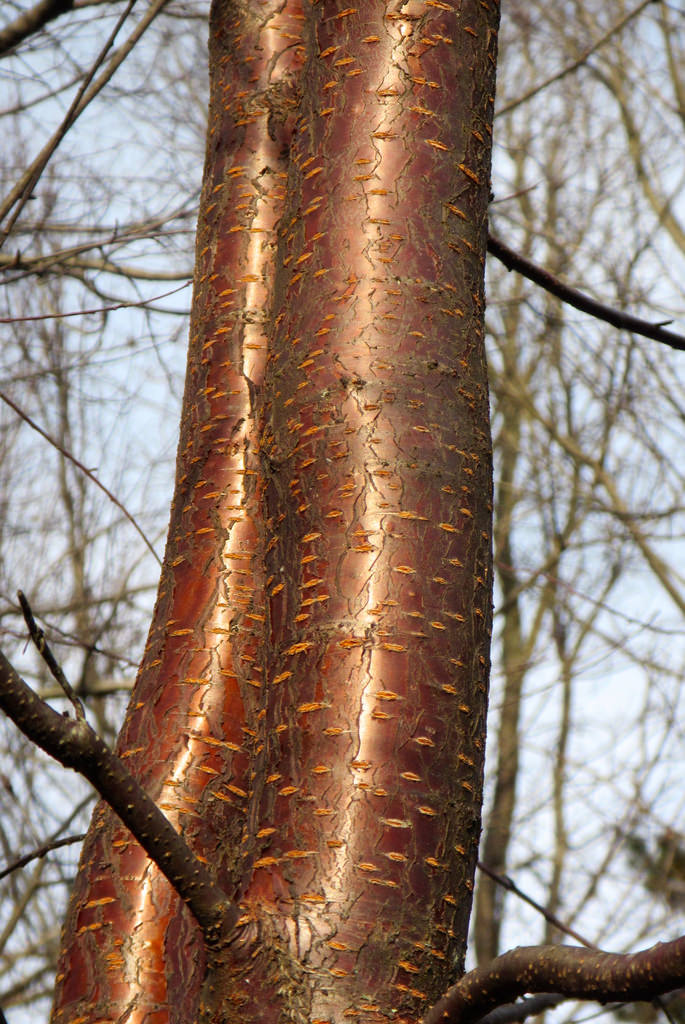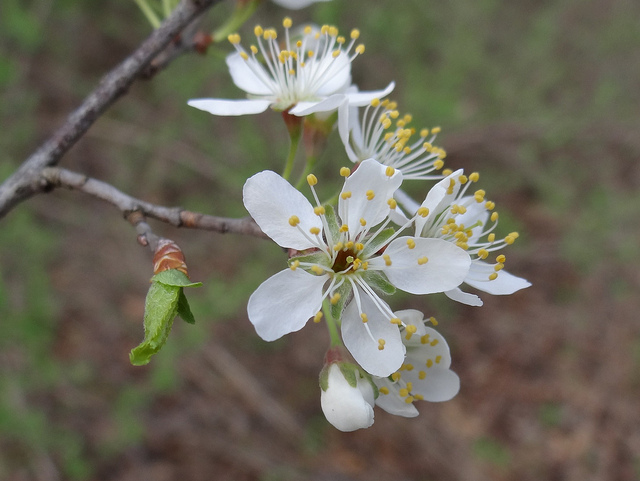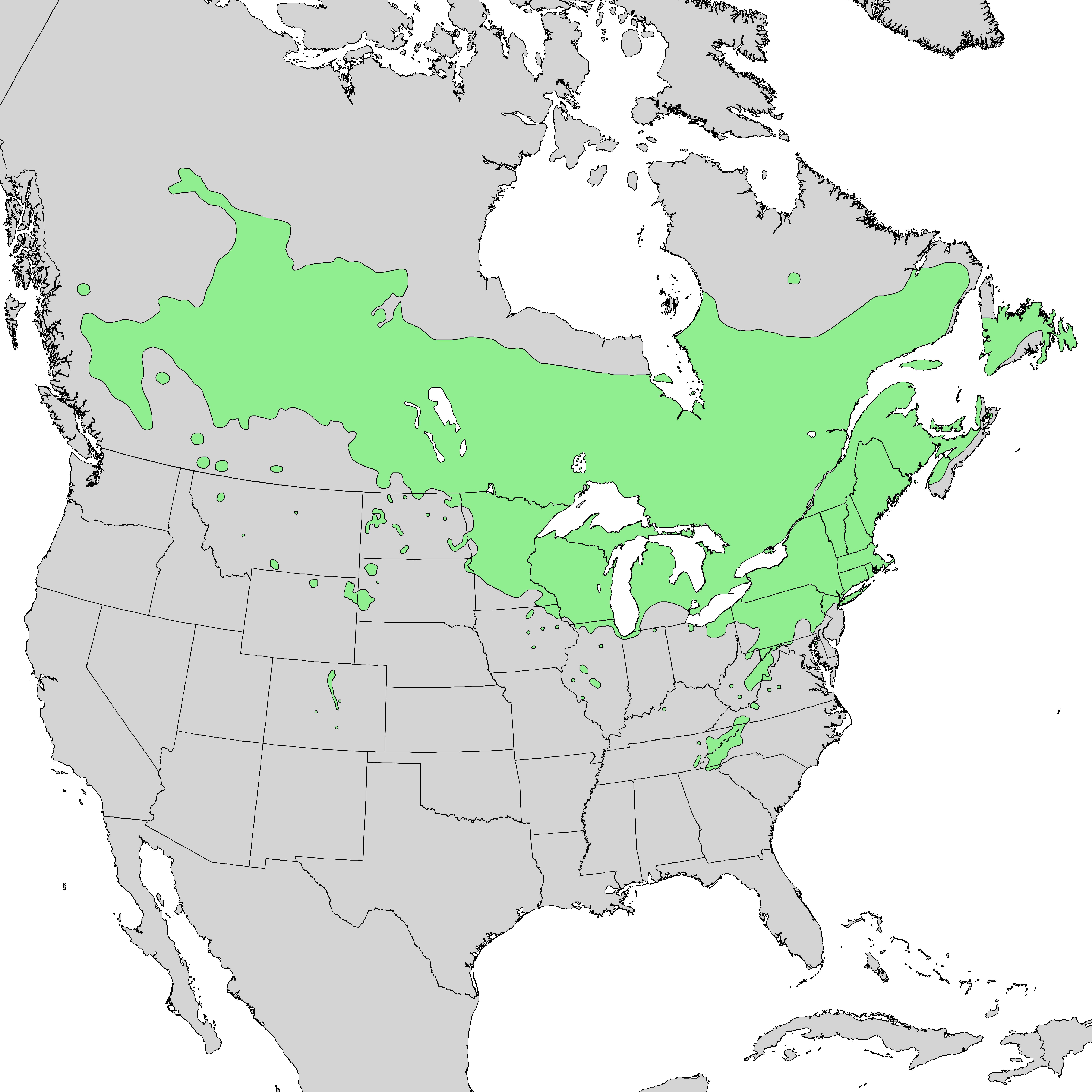Pin Cherry
Prunus pensylvanica L. f
Description
Pin cherry is also commonly called fire cherry and is a member of the rose family (Rosaceae). ¹ It is a fast-growing, short-lived tree that reaches 30 feet in height. ¹ The bark of mature trees is reddish-brown to gray, has horizontal lenticels forming lines, and peels in horizontal strips. ¹ The alternate leaves are lance-shaped, are 3 to 4 inches long with serrated margins. ³ On the petiole at the base of the leaf there is a small gland. Flowering occurs during leaf expansion in the spring. ² The one-half inch, white flowers are perfect with both male and female structures. ² The fruits are bright red, fleshy with a hard pit covering the seed. ²

Radish-brown bark with horizontal lenticels of pin cherry. @ Boyer and McDowell *2018, Maryland Biodiversity Project 4

Flowers of pin cherry. Maryland Biodiversity Project, C. Raimond 4

Leaves and fruit of pin cherry. Minnesota Department of Natural Resources ³
Distribution
Pin cherry is found in the cooler climates of Canada from Newfoundland to British Columbia and along the mountain ranges of the Rocky Mountains to Colorado in the west and Appalachian Mountains to Georgia in the east. ² Im Maryland it reaches its greatest abundance in Garrett and Allegheny counties, but is scattered elsewhere.4

Native distribution map of pin cherry. Wikimedia commons 5
Wildlife Importance
Pin cherry is a host plant for the Coral Hairstreak, Red-Spotted Purple, Spring Azure, and Viceroy butterflies. ¹ It also serves a browse for white-tailed deer. Twenty-five species of song birds consume the fruit of pin cherry. ² Its regeneration following fire and its rapid growth make pin cherry an important species in stabilizing ecosystems following disturbance. ²
Economic Importance
Leaves of pin cherry are poisonous containing hydrocyanic acid. ² Symptoms include spasms, convulsion, coma and respiratory failure.¹ The fruits can be used for jelly or syrup. ¹ The wood can be used for making paper. ²
Threats
Pin cherry can be affected by the cherry leaf spot disease and powdery mildew. ² The most common and widespread disease is black knot. Eastern tent caterpillar may partially defoliate the tree. ¹
Interesting Facts
- Pin cherry seeds can remain viable in the soil for up to 150 years before germinating. ²
- Pin cherry is used to graft sour cherry onto to provide commercial purposes. ²
References
- North Carolina State Extension: Prunus pensylvania
- USDA Forest Service Silvics, Vol 2, Hardwoods: Prunus pensylvanica
- Minnesota Department of Natural Resources: Pin cherry
- Maryland Biodiversity Project: Pin cherry
- Wikimedia Commons: Prunus pensylvanica
Contributed by J. Hull
